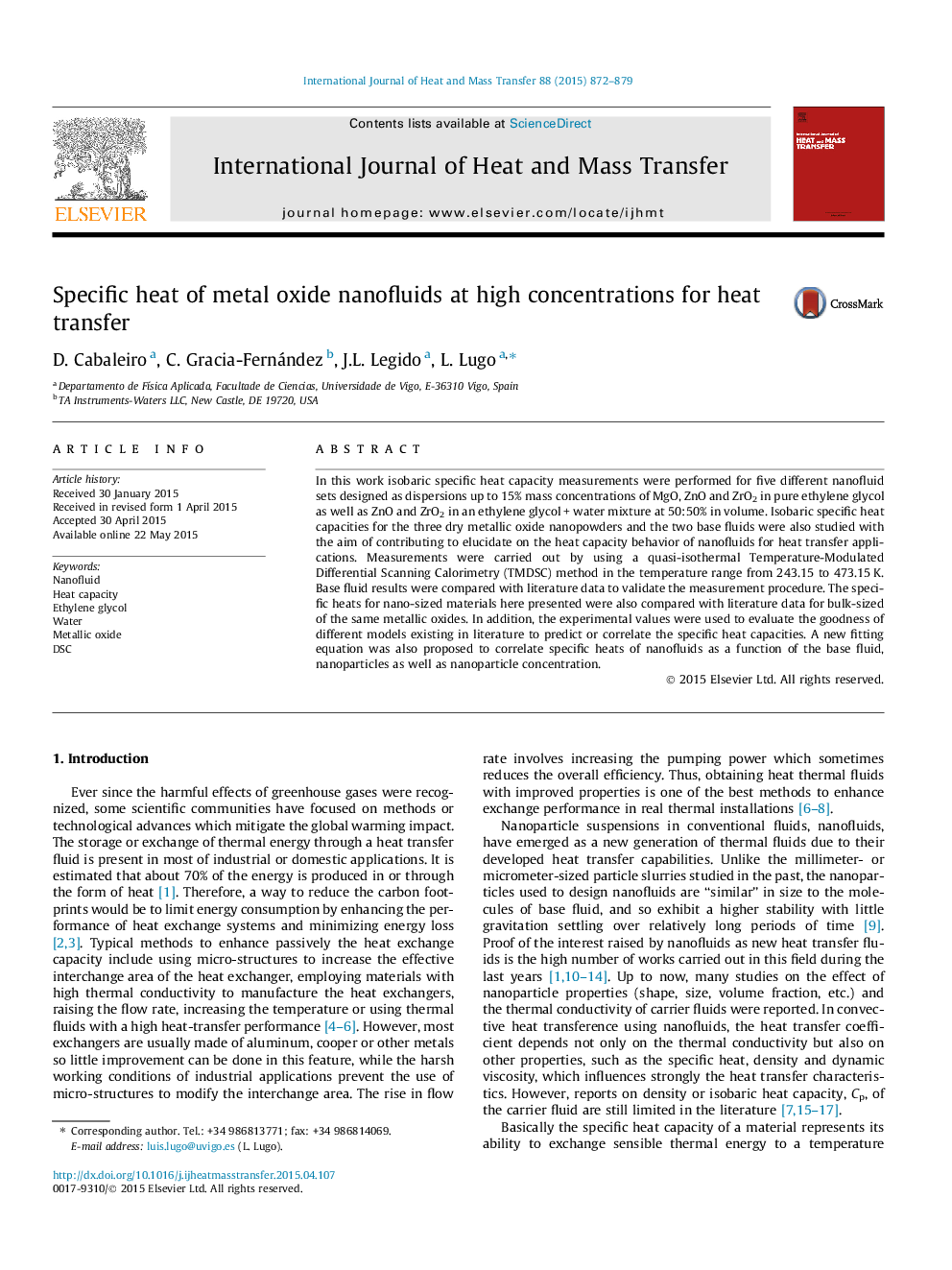| Article ID | Journal | Published Year | Pages | File Type |
|---|---|---|---|---|
| 657076 | International Journal of Heat and Mass Transfer | 2015 | 8 Pages |
•Stable EG and (EG-W)-based MgO, ZnO and ZrO2 nanofluids up to 15 wt.% were designed.•Diminutions in Cp(ϕ) curves reach 9% for MgO/EG and 12% for ZnO and ZrO2 nanofluids.•Cp,v remains constant or even increases with mass fraction for ZnO nanofluids.•Predictive models represent well the Cp of nanofluids at wt.% of up to 15%.•A new fitting equation to correlate Cp values of nanofluid is proposed.
In this work isobaric specific heat capacity measurements were performed for five different nanofluid sets designed as dispersions up to 15% mass concentrations of MgO, ZnO and ZrO2 in pure ethylene glycol as well as ZnO and ZrO2 in an ethylene glycol + water mixture at 50:50% in volume. Isobaric specific heat capacities for the three dry metallic oxide nanopowders and the two base fluids were also studied with the aim of contributing to elucidate on the heat capacity behavior of nanofluids for heat transfer applications. Measurements were carried out by using a quasi-isothermal Temperature-Modulated Differential Scanning Calorimetry (TMDSC) method in the temperature range from 243.15 to 473.15 K. Base fluid results were compared with literature data to validate the measurement procedure. The specific heats for nano-sized materials here presented were also compared with literature data for bulk-sized of the same metallic oxides. In addition, the experimental values were used to evaluate the goodness of different models existing in literature to predict or correlate the specific heat capacities. A new fitting equation was also proposed to correlate specific heats of nanofluids as a function of the base fluid, nanoparticles as well as nanoparticle concentration.
